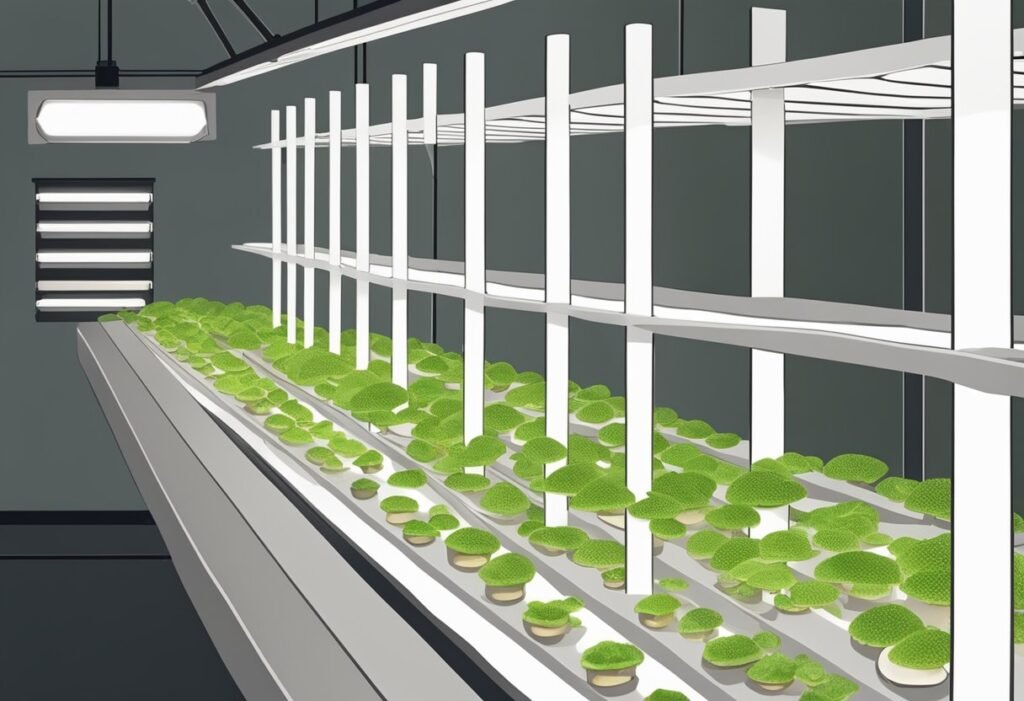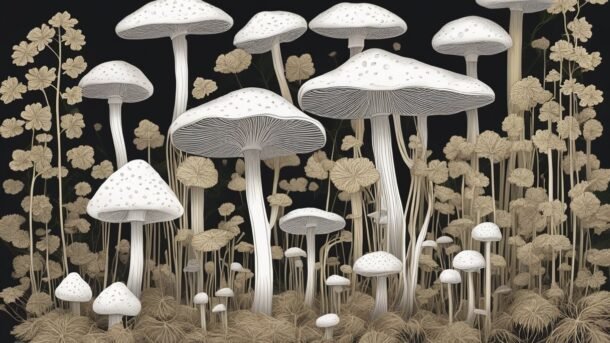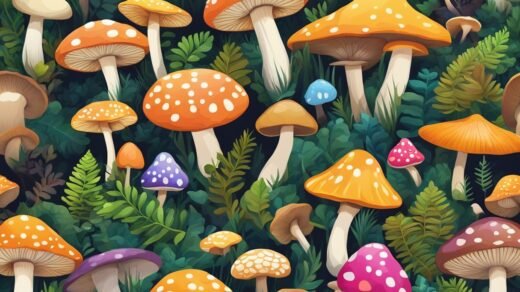Enoki mushrooms are a delicious and nutritious addition to any meal. These small, delicate mushrooms are known for their long, thin stems and tiny caps, and they have a crisp, slightly crunchy texture and a mild, slightly sweet flavor. Enoki mushrooms are rich in antioxidants, vitamins, and minerals, and they are low in calories, making them a great choice for anyone looking to eat healthily.
Growing enoki mushrooms at home is a fun and rewarding project that can yield a bountiful harvest of fresh, flavorful mushrooms. While it may seem daunting at first, growing enoki mushrooms is actually quite simple and requires only a few basic supplies and some patience. In this article, we will provide a step-by-step guide to growing enoki mushrooms at home, from selecting the right growing medium to harvesting your first crop. Whether you are an experienced gardener or a novice, you can easily grow your own enoki mushrooms and enjoy the delicious, nutritious fruits of your labor.
Understanding Enoki Mushrooms

Enoki mushrooms, also known as Flammulina velutipes, are a type of mushroom that is native to East Asia. They are commonly used in Japanese, Chinese, and Korean cuisine, and are becoming more popular in Western cuisine as well. They have a unique appearance, with long, thin stems and small, white caps.
Species and Varieties
There are many different varieties of enoki mushrooms, but the most common is the golden needle mushroom. This variety has a pale yellow color and a delicate flavor. Other varieties include the snow puff mushroom, which has a fluffy texture, and the velvet foot mushroom, which has a slightly firmer texture and a slightly nutty flavor.
Nutritional Value
Enoki mushrooms are low in calories and high in nutrients, making them a healthy addition to any diet. They are a good source of protein, fiber, vitamins B and D, and minerals such as potassium, copper, and selenium. They also contain antioxidants, which can help protect against cell damage and reduce the risk of chronic diseases such as cancer and heart disease.
Overall, enoki mushrooms are a delicious and nutritious addition to any meal. They are easy to grow at home, and can be used in a variety of dishes, from soups and stir-fries to salads and sandwiches. With their unique flavor and delicate texture, they are sure to be a hit with any mushroom lover.
Cultivation Requirements

Growing Medium
Enoki mushrooms grow best on a substrate of hardwood sawdust. The sawdust should be sterilized before use to prevent contamination. The sterilized sawdust is then mixed with enoki mushroom spawn, which can be purchased online or from a specialty store. The mixture is then placed in a clean container, and the mycelium will start to grow.
Temperature and Humidity
The ideal temperature range for growing enoki mushrooms is between 72-77 degrees F (22-25 C). The humidity level should be kept high, at around 85-90%. This can be achieved by misting the growing area regularly or using a humidifier. It is important to keep the growing area clean and free of contaminants, as enoki mushrooms are susceptible to mold and other fungi.
Lighting Conditions
Enoki mushrooms require very little light to grow, and in fact, they prefer to grow in the dark. If you want white mushrooms, keep the jars in a dark location. If you prefer brown mushrooms, they can be grown in a well-lit area. It is important to note that enoki mushrooms should not be exposed to direct sunlight, as this can cause the mycelium to dry out and die.
Overall, growing enoki mushrooms can be a rewarding experience for those who enjoy gardening and experimenting with new foods. With the right growing conditions and a little patience, anyone can grow their own enoki mushrooms at home.
Growing Process
Growing enoki mushrooms requires careful attention to detail and a few key steps. Below are the four main steps involved in the growing process: spore selection, inoculation, incubation, and fruiting.
Spore Selection
When selecting spores for growing enoki mushrooms, it is important to choose a high-quality strain that is suited to your growing conditions. It is recommended to purchase spores from a reputable supplier to ensure that they are viable and free from contaminants.
Inoculation
The next step is to inoculate your growing medium with the spores. Enoki mushrooms can be grown on a variety of substrates, including hardwood sawdust and straw. The substrate should be sterilized to prevent contamination before inoculation.
Incubation
After inoculation, the substrate needs to be incubated in a warm, humid environment. The ideal temperature range for enoki mushrooms is between 50-55 degrees Fahrenheit (10-12 degrees Celsius). It is important to maintain a high level of humidity during this stage to prevent the substrate from drying out.
Fruiting
Once the mycelium has colonized the substrate, small mushroom pins will begin to form. At this point, it is important to maintain proper temperature and humidity levels to encourage fruiting. Enoki mushrooms typically take 2-3 weeks to mature and can be harvested when the caps are fully formed and the stems are firm.
Overall, growing enoki mushrooms requires attention to detail and a bit of patience, but the end result is a delicious and nutritious addition to any meal.
Harvesting and Storage
Harvesting Techniques
Enoki mushrooms are ready to be harvested when the caps are fully developed and the stems are firm. To harvest, gently twist the stem of the mushroom and pull it from the growing medium. Be sure to avoid damaging the surrounding mushrooms or the growing medium. It is important to harvest the mushrooms before the caps begin to open and release spores, as this can reduce the quality of the remaining mushrooms.
Post-Harvest Handling
After harvesting the mushrooms, it is important to handle them carefully to avoid bruising or damaging the delicate caps. It is recommended to use a soft-bristled brush or a damp cloth to gently clean the mushrooms. Avoid using water to clean the mushrooms, as they can absorb moisture and become slimy.
Storage Methods
Enoki mushrooms should be stored in a cool, dry place to extend their shelf life. They can be stored in a paper bag or wrapped in a damp cloth and placed in the refrigerator for up to one week. For longer storage, the mushrooms can be blanched and frozen for up to six months. It is important to note that frozen enoki mushrooms may lose some of their texture and flavor.
In conclusion, harvesting and storing enoki mushrooms properly can help to maintain their quality and flavor. By following these simple techniques, home growers can enjoy fresh enoki mushrooms for weeks or even months after harvesting.
Troubleshooting Common Issues
Growing enoki mushrooms at home is generally straightforward, but it’s not uncommon to encounter a few hurdles along the way. Here are some common issues that growers may experience and how to solve them.
Contamination Prevention
Contamination of your growing conditions could lead to the loss of your entire crop. To prevent contamination, make sure your hands, containers, working surfaces, and tools are clean. It’s also important to use sterilized growing medium and spawn.
Here are some tips to prevent contamination:
- Use a clean, well-ventilated growing area.
- Use gloves and a face mask when handling the growing medium and spawn.
- Sterilize the glass containers and all equipment before use.
- Keep the growing area free of dust and debris.
- Avoid overwatering the growing medium.
Pest Management
Pests can be a problem for enoki mushroom growers. Common pests include mites, flies, and slugs. To prevent pests, keep the growing area clean and well-ventilated.
Here are some tips for pest management:
- Regularly inspect the growing area for signs of pests.
- Remove any dead or diseased mushrooms immediately.
- Use sticky traps to catch flying pests.
- Apply a natural pest control solution, such as neem oil or garlic spray.
- Avoid overwatering, as this can attract pests.
By following these tips, you can prevent contamination and manage pests to ensure a healthy crop of enoki mushrooms.




